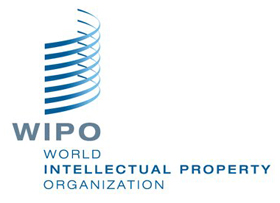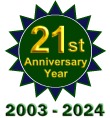|
Earlier
this week, we published our 18th annual State
of the Industry Cover Story in which 22
domain experts explained what fueled the 2021
boom in the domain market and provided their
forecasts for the industry's prospects in 2022.
Those we ask for commentary are among the busiest
people in the business, so several we call on each
year can't respond before our deadline. One of
those this year was pioneering domain attorney
Howard Neu who was tied up compiling his own
popular reports on critically important UDRP
case results. Howard published his latest reports
this week and was kind enough to send us a summary
of his findings so we can share them with you.
His commentary is below. As
you know, my primary legal practice is in defending
registrants who find themselves on the wrong
end of a UDRP Action. The UDRP was
set up by ICANN to make it easier and
cheaper for trademark holders to obtain domain
names from registrants that they believe are |

Attorney
Howard Neu
NeusNews.com |
|
"confusingly
similar" to their trademarks. The
primary purpose was and continues to be the best
way to defeat cybersquatters and typo squatters
who try to capitalize off of the trademark
holders' fame and popularity by directing users to
their site. To a very great extent, this has
been very successful in defeating those "domainers"
who give all domain investors a bad name.
At
NeusNews.com,
I publish semi-annually the results of cases
brought before the two primary providers of UDRP; WIPO
and the FORUM.
Within the past few days, I have published
the Annual Reports for both providers (WIPO
Report, FORUM
Report). I am happy to say that
the cybersquatters are still losing their domains
to the trademark holders with 3,515 domains
transferred at WIPO from default cases and
1,642 domains transferred at FORUM from
default cases. That means that over 5,000
domains were transferred from virtual
cybersquatters. This is why all domain
investors are looked down upon by trademark
holders and major corporations as "cybersquatters".
|
Fortunately,
however, for those domain registrants and
investors who have legitimate businesses,
either by offering a product or service
online, or by investing in domain names
that have value, the trend may be looking
a little more positive. First;
noticeable is the percentage of contested
cases where the Complaint has been denied
- 42% at the FORUM and 39%
at WIPO. Second; noticeable is the
increase in findings of abuse by the
Complainants, known as Reverse Domain
Name Hijacking (RDNH) - 44 at
WIPO and 10 at the FORUM. Third;
Panelists are looking more closely at the
non-contested cases to make sure that the
Complainant has stated what is known as a Prima
facie case against the Respondent and at
WIPO in the last 6 months, 15 claims were
denied and 2 were found to be guilty of
RDNH, and 15 claims were also denied at
the FORUM. |


|
The
biggest problem for domain investors,
however, is that they are now being held
to a higher standard than other registrants
when it comes to whether or not the domain in
question was registered and is being used in
"bad faith". The general rule is
that if you register a domain where there is no
"confusingly similar" trademark OR
use it by not trading on the fame of an existing
trademark, there is no "bad faith".
That is because the UDRP Rule is that if a
domain is registered AND used in "bad
faith" it will be transferred to the
Claimant. Domain investors, however, must
show that they did extensive research before they
acquired the domain to make sure that there were
either no existing trademarks at the time of
registration, or that there was at least more
than one trademark holder.
A
recent case held that there was only one
trademark holder of a mark that was
"confusingly similar" to the
registrant's domain, and that therefore the
registrant domain investor was targeting the
claimant even though the domain was never
offered by the investor to the trademark holder
for sale and was not using it to capitalize on the
claimant's trademark. The panel held that the
domain investor registered the domain in "bad
faith" and transferred it to the claimant.
This is going to make it increasingly
difficult for auction houses, including GoDaddy's
Afternic and drop catchers like Snapnames
and NameJet to find domain investors who
are willing and able to spend the time necessary
to research each domain that is up for auction to
determine whether or not the domain can be bid
upon and registered without resulting in a UDRP
Action.
Editor's
Note: The issue that Howard raises
about domain investors now having to meet a higher
standard than other domain registrants in UDRP
cases is a matter of fairness that should concern
all investors. Fortunately, the Internet
Commerce Association (ICA)
exists to address just this kind of development. I
believe the best thing we can all do to protect
our rights and insure a level playing field
is to support
the ICA as a member.
|



